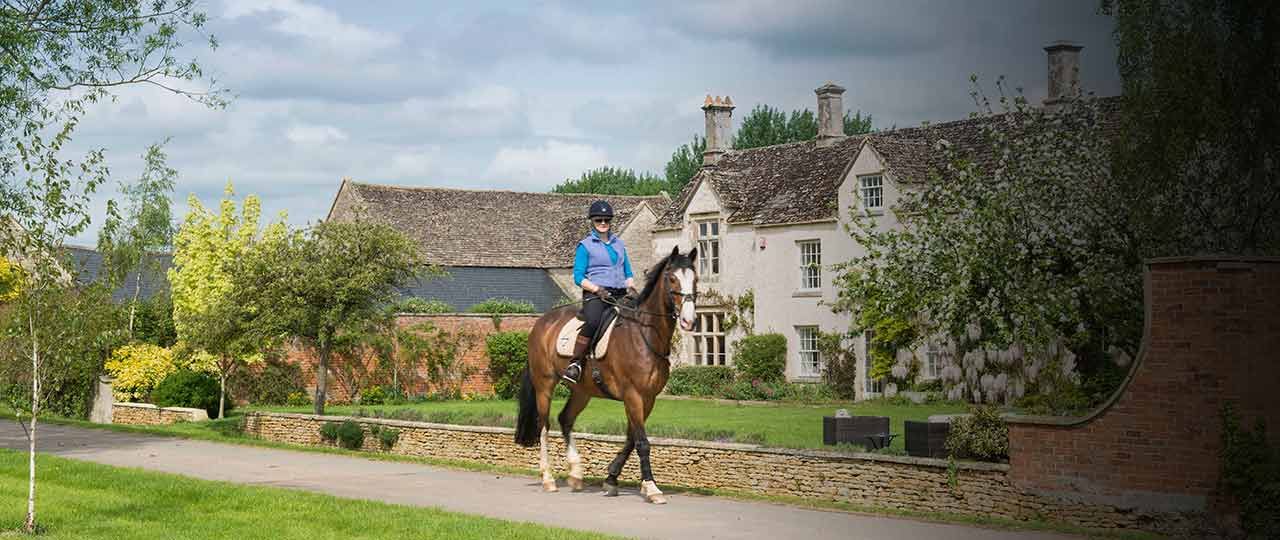
With the Royal Windsor Horse Show on May 10 and Ascot in June, Luke Morgan, a Partner in our National Country House Department, takes a closer look at what you need to consider when buying your own equestrian property.
Buying an equestrian property can be the investment of a lifetime – but there are a few considerations you should bear in mind to ensure you make the right purchase.
With around 1 million horses in the UK under either private or professional ownership, it’s no surprise there’s a huge demand for equestrian properties – especially as they’re in such limited supply. And it means that if you’re looking to buy one, you need to make sure you buy the right one.
What type of rider are you?
The type of property you’re after depends on what type of rider you are. There is a big difference in what hobby riders and professionals require from a property.
Hobby riders will need around 10-plus acres, 3 and 4 stables and good riding nearby. An American barn on the property is ideal as it can be used for anything. It could be fully converted into stables or as part stables, part something else. A horse walk or indoor school – like at Crimbourne Stud in West Sussex - is a bonus.
Professional riders may look for indoor schools, horse walks and lorry parks on the property, though there is less focus on the house itself. Or you could opt for both facilities and property with the Little Lemhill Farm in Gloucestershire.
Location is also more important as they’d need to be near the shows and the events such as Surrey, Gloucester, and Sussex. And dressage, eventing, polo, and point-to-point trainers will all require slightly different facilities.
The facilities you’d get in a professional equestrian property would also mean the marketplace is much smaller as a hobbyist wouldn’t necessarily want to pay the premium for such facilities.
Location
As with all property purchases, the right location is hugely important. Not only does it need to be located somewhere that has large tracts of land, but if you’re a serious rider and want to visit shows or competitions, you’ll need easy access to the UK’s motorway network so you can travel quickly and easily.
You’ll also need to be located somewhere that has plenty of riding routes nearby – ideally within touching distance of your property so that you can take your horses out for hacks without having to spend too much time on tarmac.
Local amenities are also worth looking out for. A good local vet is a must, otherwise you could be waiting hours to get one over to check on horses in need of treatment. And a local horse community is also worth looking out for – this means clubs, venues and regular events.
Grazing and soil
The size and quality of the grazing grass and soil underneath it are hugely important consideration when choosing an equestrian property.
The British Horse Society recommends around 1.5 acres of grazing land per horse, though 2.5 acres of well-managed and maintained pasture could sustain 2 horses easily. The land should be able to be split easily if needed, allowing rotation of grazing spots.
While good grazing is important, too much of a good thing can be dangerous as any horse owner will tell you. Too much rich grass in the pasture and turning out areas can increase the risk of laminitis. The grass should ideally also be well-established and hardy.
All such land should have easy access to water for the horses to drink and some shelter.
As for the soil, the land should be free-draining to lower the risk of injury. It also makes it more manageable during the wetter seasons. The preference is for light loams and chalk based soils, avoiding heavy clay, which can clump in winter and go hard in summer, and overly sandy soil, as the horses can eat the sand, causing colic.
Look also for land with the potential to expand. If you’ve got roads or housing on three sides, the option of buying more land in the future will be limited.
Out buildings
There should be enough space to store kit and house your horses including stables, a yard, and a tack room at the least. Other features like all-weather walking or a hard standing area are also important.
Check the conditions of out buildings thoroughly to make sure that they’ve all got a good electricity and water supply. The stables should face away from the wind and be dry and well ventilated.
As for the location of the buildings, they need to be easy to see – and even hear – from the house, especially if you have children running around.
The house itself
And finally, don’t forget the house itself. A good house is important with hobby riders, but less so with professional riders.
Though don’t be put off too much if the house isn’t up to your standard. If you’re serious about buying an equestrian property, you can upgrade the home at a later date. As such properties are in limited supply, the house should be an area you’re willing to be flexible on.
